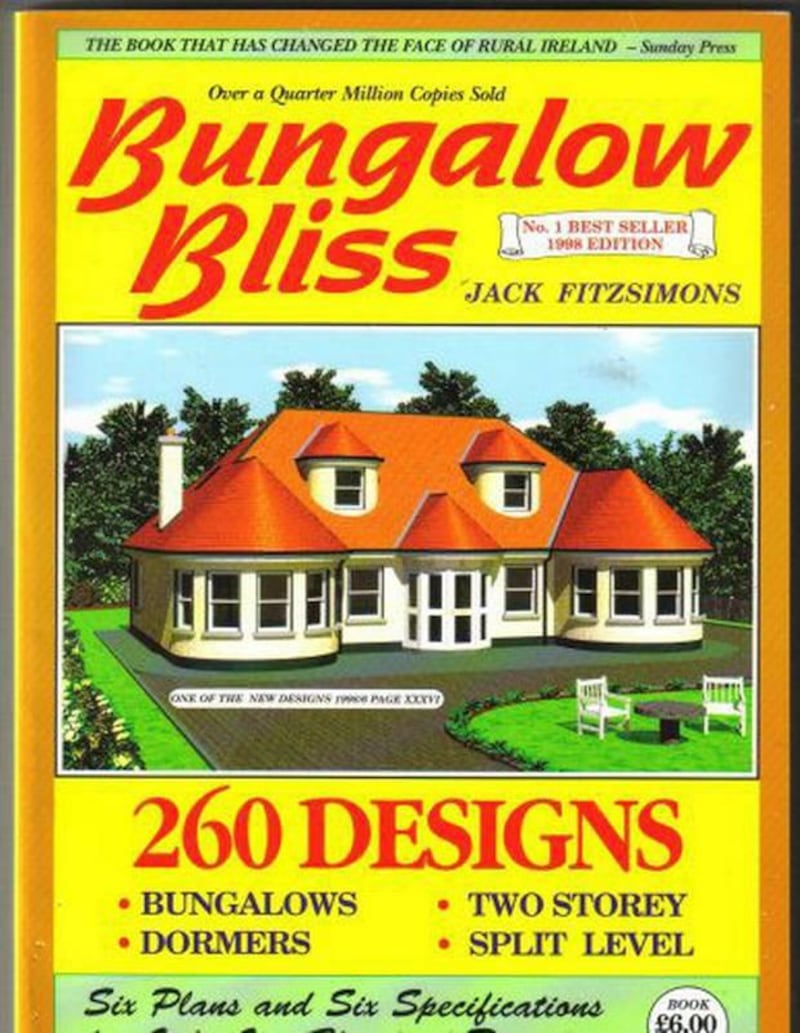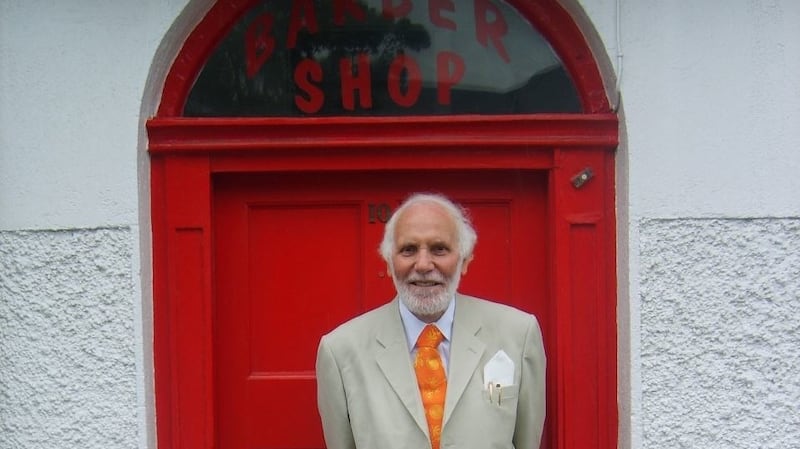First published in 1971, Jack Fitzsimons’s book Bungalow Bliss changed the face of Ireland, with its 20 easily-understood plans for affordable bungalows. Hundreds of thousands of people followed his lead.
In a new book called Bungalow Bliss Bias, posthumously published by his son Kennas, Fitzsimons defends the designs in his first book.
“For many thousands of people, Bungalow Bliss was a godsend. Others regard it as a curse,” concedes Fitzsimons Snr in his opening words, preceded by a proud listing of the number of times the book was reprinted.
By publishing the new work, his son has honoured a promise to his late father, insisting that many of the original book’s critics were neither rural-dwellers, nor architects.
His father’s work was aimed at improving the housing stock available to rural people, many of whom lived in poorly constructed cottages consisting of only a handful of rooms. “It offered a transition out of drudgery and barbaric conditions,” he says. “There has been a romanticised view of [traditional cottages] which didn’t necessarily tally with the experience of people who lived in them,” he adds. Bungalow Bliss “enabled people to realise the dream of owning their own bright, modern, affordable home”.
“You have to recognise the huge social benefit that accrued due to the publication of the book.”
‘Social conscience’
Jack Fitzsimons was born in a thatched cottage in 1930. He worked for the county engineers office in Navan and the OPW, before going into private practice.
He was encouraged by his wife to write the book, which became a bestseller. Ironically, the family had to sell the bungalow they were living in to fund the project.

He later became a senator for two terms. Kennas Fitzsimons says that his father was driven by a desire to make good housing affordable to ordinary rural people. “He was a progressive man in his architectural work and as a politician where he advocated for social justice and minority rights. He did what he believed was right, not what was politically expedient,” he says.
“He had a big social conscience, and Bungalow Bliss was an expression of that. If people aren’t able to build [then] the post office, the national school, the local shops, that’s all in trouble.”
Fitzsimons’s legacy is supported in rural Ireland, says Cllr Maura Healy Rae, who has served on Kerry County Council since 2016, when her father Danny was elected to the Dáil.
She is an avowed supporter of one-off housing. In a world where young couples are locked out of home ownership by ever increasing prices, she says that self-building is a lifeline for rural people.
“People can’t buy the homes themselves; the housing crisis in Killarney, you’ve properties going for €400,000-€600,000, something totally out of the scope of any couple where both are working,” she argues.

“These are people who aren’t looking for anything off anyone, they just want to put a roof over their head,” says Healy-Rae, adding that the situation is complicated by local authority battles over one-off planning rules.
Zoning
One-off housing may face even closer regulation in Healy Rae’s home territory of Co Kerry. Following rampant development in Co Kerry, zoning in the county under the County Development Plan 2015-2021 has been designed to prevent so-called “urban generated pressure”.
Under the new plan, outsiders would be banned from building in certain pressurised areas, while there is a ban on one-off holiday homes and second homes. Whether such strict rules survive remains to be seen. Attempts in Co Kerry to limit planning permission to locals have been found to contravene the governing principles of the European Union, which guarantees the free movement of people.
However, the National Planning Framework (NPF), published last year by the Government, may swing the pendulum back towards more restrictive planning.

The framework stipulated that a “demonstrable economic need to live in a rural area” must be the “core consideration” when judging planning applications for houses in the countryside.
‘Pragmatic solution’
Housing experts have concerns about Ireland's lingering love affair with the bungalow, according to Dr Lorcan Sirr, a senior lecturer at the Technological University of Dublin.
One-off housing was a “pragmatic solution” in its time, allowing people to build a house at an affordable cost – but significant trade-offs had to be made, which affect the Ireland of today.
“This is why we have controversies over things like hospitals and broadband. It gets very difficult to provide services to a dispersed settlement pattern. It comes at a price for society,” he said.
Equally, rural housing denuded rural towns and villages of their populations. Rather than move to cities, often people simply moved out from towns and villages, becoming ever more dependent on cars.
“Towns and villages around Ireland are empty because we have promoted one-off housing,” says Sirr, “and people wonder why the pubs close. [It] marginalises vulnerable citizens who don’t have access to services”.
One-off homes: The figures
More than one in four new dwellings built in Ireland last year was a one-off house, according to the Central Statistics Office.
Of the 18,072 new dwellings completed in 2018, some 4,699 were single units, an increase of more than 10 per cent on 2017. The share of new homes composed of one-off dwellings is declining, however.
In 2011, there were 4,814 one-off units built, accounting for almost 69 per cent of the total housing output that year. Both the housing output and the number of one-off housing dipped the following years before recovering from 2014 onwards.
According to the CSO there are some 442,669 one-off houses in rural Ireland, accounting for 71.8 per cent of the total rural housing stock.










